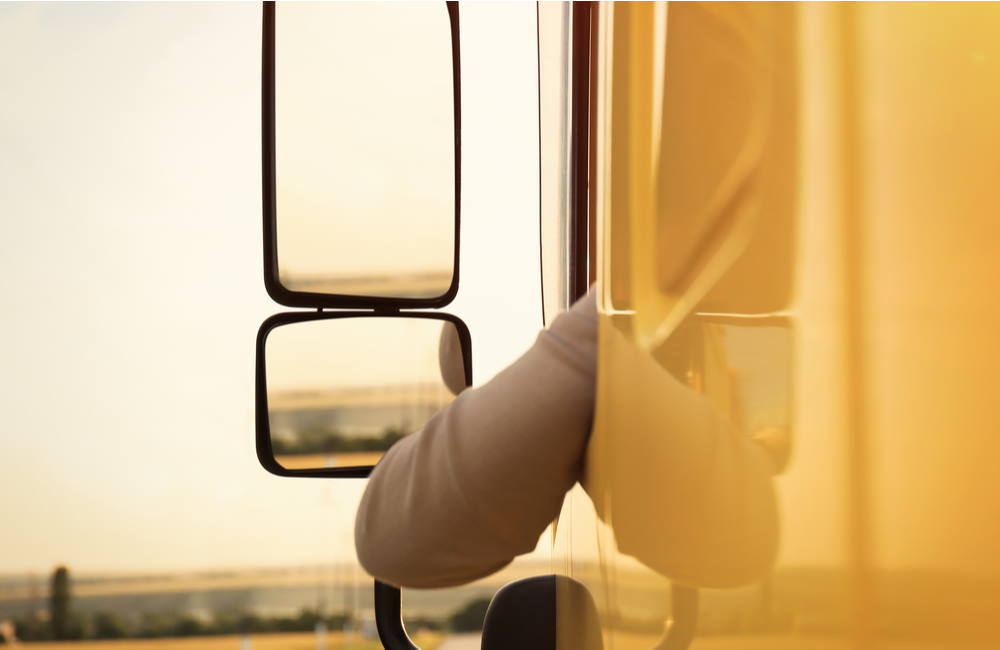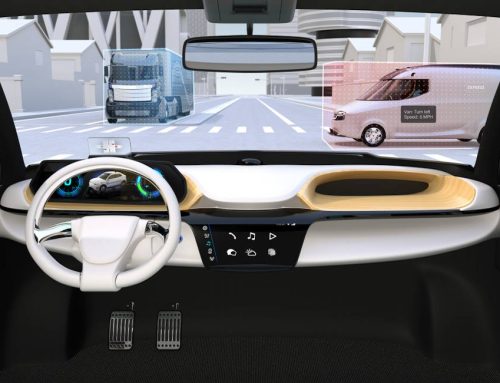Blind spot detection is important for trucks because they can have blind spots 30 feet in back, 20 feet in front, two lanes deep on the passenger side and one lane deep on the driver’s side. Blind spots become even more dangerous when other vehicles change lanes, turn or pull out suddenly from a full stop.
Crash statistics highlight the danger created blind spots. For example, the U.S. Department of Transportation estimates that blind spots lead to 413,000 traffic accidents involving all vehicles every year. One of the most dangerous commercial vehicle blind spots involves a vehicle turning right who does not see a cyclist approaching on the passenger side.
These factors make blind spot detection one of the most important issues fleets need to address to create optimal safety for drivers.
Solutions for Blind Spots
Experts have developed many different solutions for blind spots over the years. They fall into categories: passive and active solutions. Passive systems include the following.
Mirrors
Mirrors represent the oldest method to address blind spots. The proper use of mirrors continues to solve many, but not all, the issues with blind spots. Depending on the type of vehicle, there are ways to adjust mirrors that eliminate most blind spots (engineer George Platzer wrote a famous paper on it published in 1995 by SAE International). While effective for cars, it requires adjusting mirrors in a way that differs from the typical positions. They also require readjustment with every new driver.
For trucks, the sheer size of the vehicle makes eliminating blind spots much more difficult. The mirrors themselves create blind spots in conjunction with the A-pillar of a truck, which holds the windshield in place. This especially impacts bus drivers who must lean as far as 20 inches to see properly every time they make a turn.
Perhaps the biggest issue with mirrors is the time needed to check them. In a dangerous situation, drivers might not have that time.
Cameras
A passive blind spot protection system that uses cameras requires the mounting of cameras with wide-angle lens on the sides of the vehicle, as well as the rear. These cameras relay images to monitors in the cab, giving drivers a full view of blind spots. Systems differ, with some only showing images when a driver signals to turn. The issue with these systems is ensuring that drivers get training on routinely checking the monitors and quickly processing what they see.
Active Systems
While the active systems below check for different issues, they all have something in common: they issue an audio, visual or haptic alert to drivers. This eliminates the need for drivers to always see danger in mirrors or on monitors. The system acts as a tech partner for the driver, communicating with them when there is an issue.
Backup
One of the biggest blind spots for trucks is directly behind the truck body. Backup systems use sensors that monitor the distance between the vehicle and other objects, including walls, other vehicles, pedestrians and cyclists.
Blind Spot Protection
In blind spot protection systems, sensors monitor the blind spots on the wide side of the vehicle, giving drivers an alert when another vehicle enters the area. This system is most effective when drivers use it before changing lanes on the roadway.
Pedestrian/Cyclist
This also monitors blind spots, but in this case the system is calibrated to alert drivers of cyclists and pedestrians on their side. This is especially useful when large vehicles plan to turn right and cannot see cyclists and pedestrians approaching along sidewalks on the passenger side. It’s especially effective in urban settings.
Front
Large vehicles have two blind spots in the front. One is the area directly in front of the vehicle, which is typically a danger area when a large truck or bus first starts to move. The other is created by the A-pillar and side mirror as a driver makes a turn. Both present dangers, mostly to pedestrians in urban environments. Again, the system alerts drivers when someone has entered the blind spot area.
These active systems, created with advanced technology, have emerged in recent years as the best way to avoid collisions, keeping drivers, cyclists and pedestrians safer. Today’s drivers benefit from using a combination of passive and active systems that best reduces the risk of accidents.









